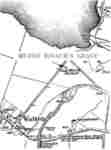 | Caithness.Org | Community | Business | Entertainment | Caithness... | Tourist Info | Site Map |
• Advertising • Chat Room • Contact Us • Kids Links • Links • Messageboard • News - Local & Scottish • News - UK & News Links • About / Contact Us • Submissions |
• Bookshop • Business Index & News • Jobs • Property For Sale • Property For Rent • Shop • Sutherland Business Index |
• Fishing • Fun Stuff • George, The Saga • Horses • Local Galas • Music • Pub Guide • Sport Index • What's On In Caithness |
• General Information • B & Bs • Backpackers • Caravan & Camping • Ferries • Getting Here • Holiday Letting • Hotels • Orkney • Pentland Firth • Sutherland • Taxis |
| N E W S F E E D S >>> |
Historical Articles
|
Murdo Rivach’s Grave James Calder included many traditional folktales in his History of Caithness, recognising that they were remnants of local history distorted by generations of oral transmission. It is seldom possible to test the historical accuracy of folk-tales, however at the south-east corner of Loch Watten is a spot where this might just be possible.
This then was the local tradition, about 1872, as related to the map makers by, Sergeant Mackay; Robert Mieklejohn, grocer; and John Doull, Post Office. Suspecting that the feature might be rather older the surveyors suggest that it could be a ‘Danish camp’, their catch-all title for sites which could not be easily classified. However, Uaigh Mhurcha Riabhaich is much smaller than any known ring fort in the county (Ref 2). Although the field has been
ploughed many times there is still a circular depression at ND 2455 5480.
It is now about 34 ft in diameter and approximately 6inches deep, with a
decided hump in the centre. In this respect it is unlike a hut circle.
Paul Macintyre or Mactyre or Meutier appears in several historical records between 1350 and 1372. He held Creichmore near Bonar Bridge, and is said to have built the medieval tower within the vitrified fort on top of Dun Creich. In 1365 he was granted additional lands in Strath Oykell by his father-in-law Hugh Ross, brother of the Earl of Ross (Ref 4). This same Hugh Ross of Philorth had in 1361 bought, from James Prat of Kerdale, in Buchan a yearly rent of 6 marks sterling due from the lands of Fraswiln (Freswick), Okyngil (Aukengill) and Harpsdol (Harpsdale) for the sum of 35 marks sterling to be paid by Hugh on recovering the same by law (Ref 5). The true historical background to the traditional tale of Murdo Rivach is of an absentee landlord having difficulty obtaining rents from his lands in Caithness so he sells the right to Hugh Ross. Hugh entrusts their collection to his son-in-law Paul MacTyre, who in turn sends his son Gillespie and Murdo Rivach into Caithness. They gather cattle in payment from Freswick and Aukengill and are waylaid at Watten as they head south to collect the Harpsdale rents. The skirmish at Watten can probably be dated between 1361 when Hugh Ross bought the rents in Caithness and 1365 when Paul Mactyre was granted additional lands in Strath Oykell, possibly as compensation for the loss of his son. It is hardly surprising that a Wizard has become attached to the tale. What is remarkable is that Mhurcha Riabhaich ‘s name, in contemporary Gaelic, has been linked to this spot for over six hundred years. It opens up the possibility that other aspects of the folktale are also true. Taking a head as a triumphal trophy is well recorded for earlier periods but here a new twist is added to this bizarre ritual with the losing side taking their leaders head home after the battle. Perhaps this custom was more widespread than we believe, for just a short distance upstream from Murdo’s grave, lies the Clow chapel which revealed a number of ‘skull only’ burials when the graveyard was excavated in the 1970s. Were these the remains of Caithness men who had died on some distant battlefield? The history of Caithness in the 14th century is patchy, Norse influence had all but disappeared and nascent Scottish power was still diffuse, being filtered through the distant Earldom of Ross. An archaeological investigation of Murdo Rivach’s grave, with its background of oral and written history would open an interesting window on this shadowy period. Perhaps Highland Archaeology Week could provide the equipment and expertise to carry out a preliminary resistivity survey to confirm the existence of a grave beneath the slight surface indications. 1 Ordnance Survey Name Boolç Watten Parish. 2. Concentric Earthworks, G Leet, Caithness Field Club Bulletin, April 1997, Vol 6, No 2, p28. 3.The Gunns by Thomas Sinclair, 1890, page 193. 4. Origines Parochiales Scotiae, Vol 2, Pt 2, Creich Parish, p685 & p689 5. Origines Parochiales Scotiae, Vol 2, Pt 2, Cannishay Parish, page 812 First Published In Caithness Field Club bulletin April 1998 |
| Addendum To The Murdo Rivach Story by Elaine Smith |










